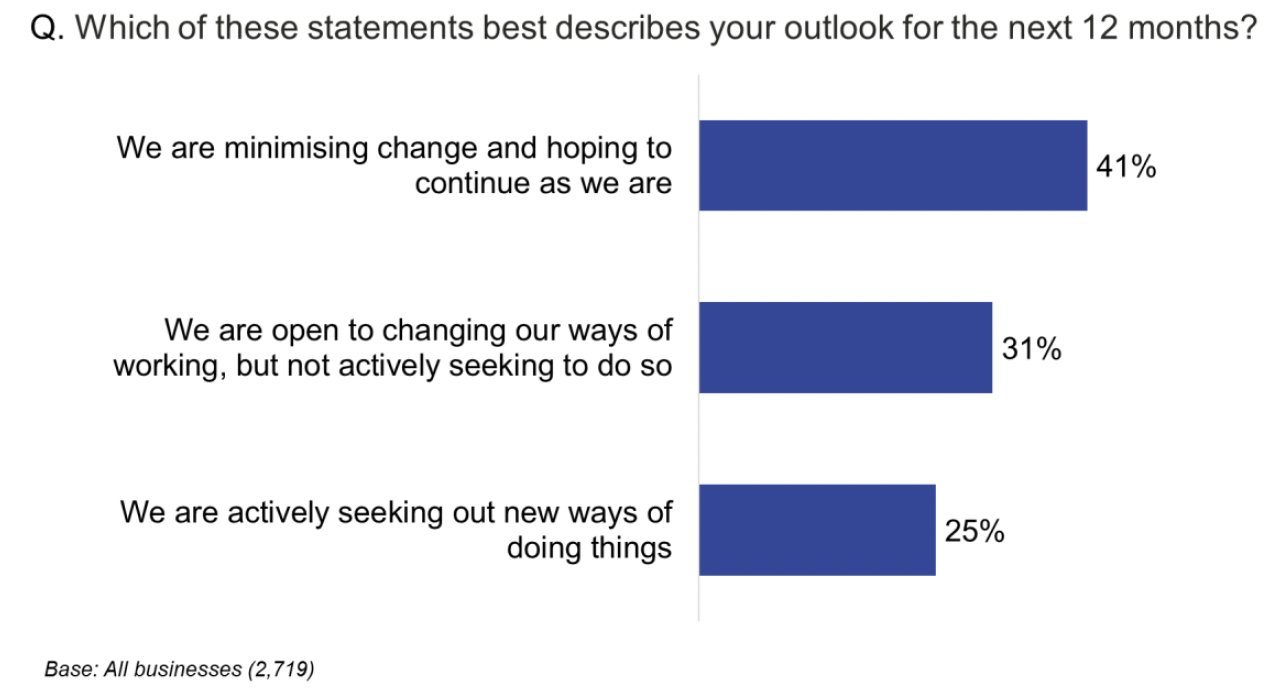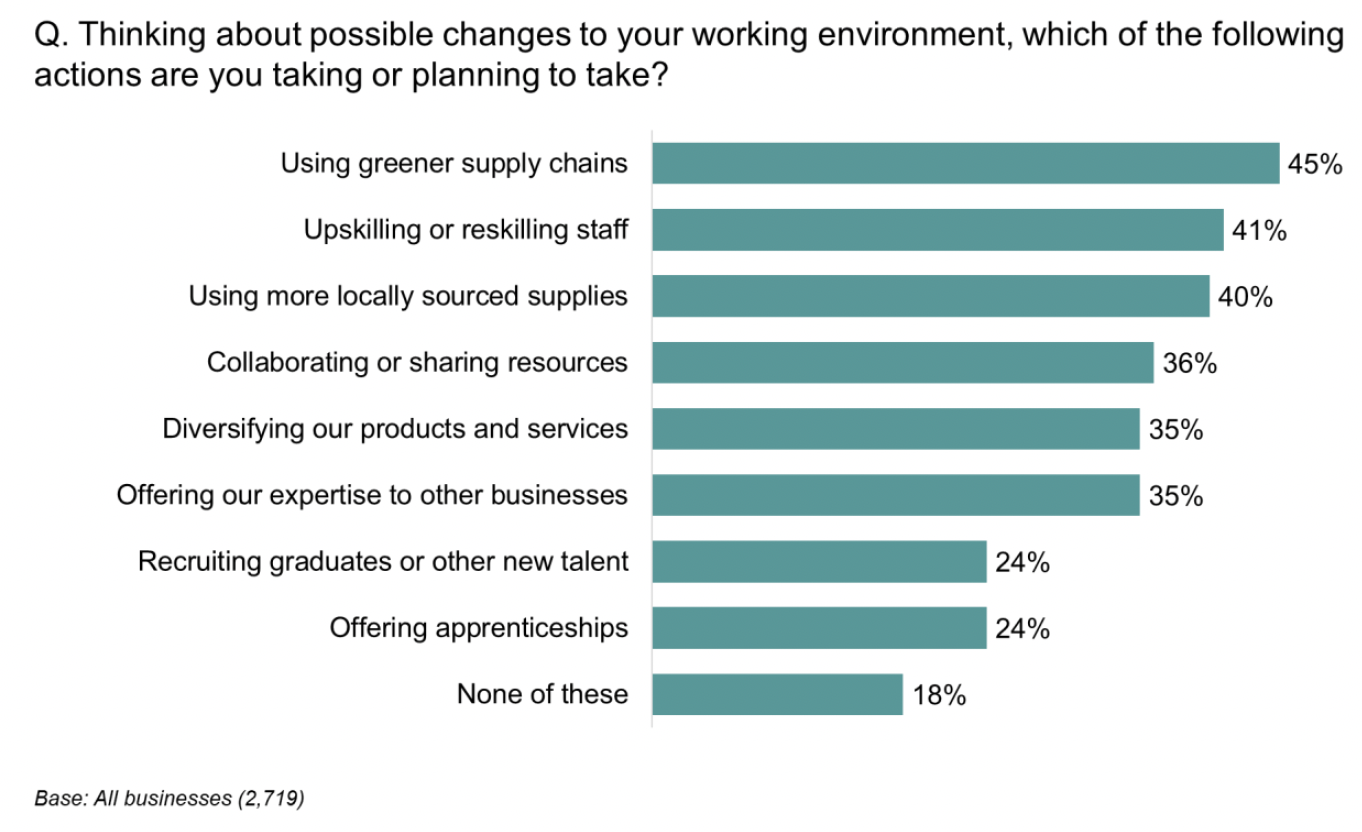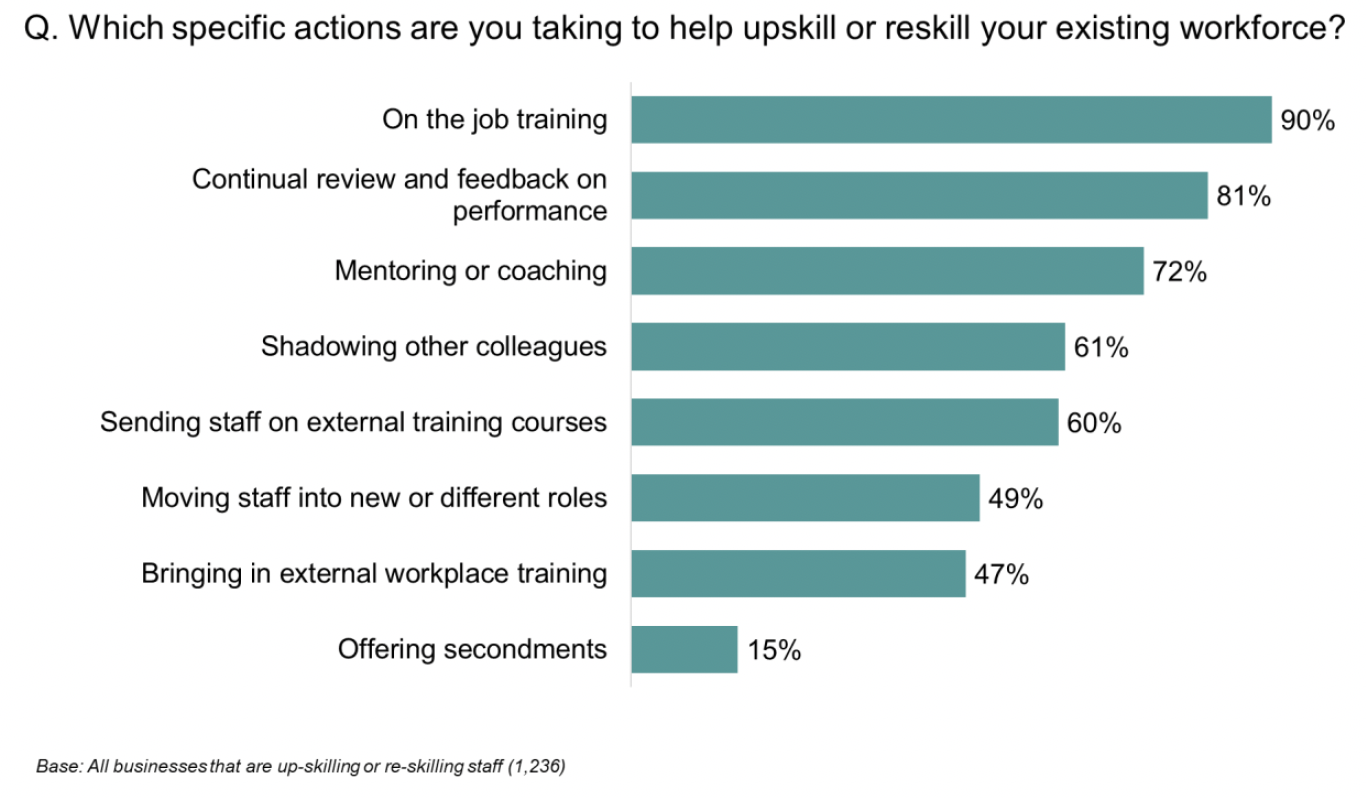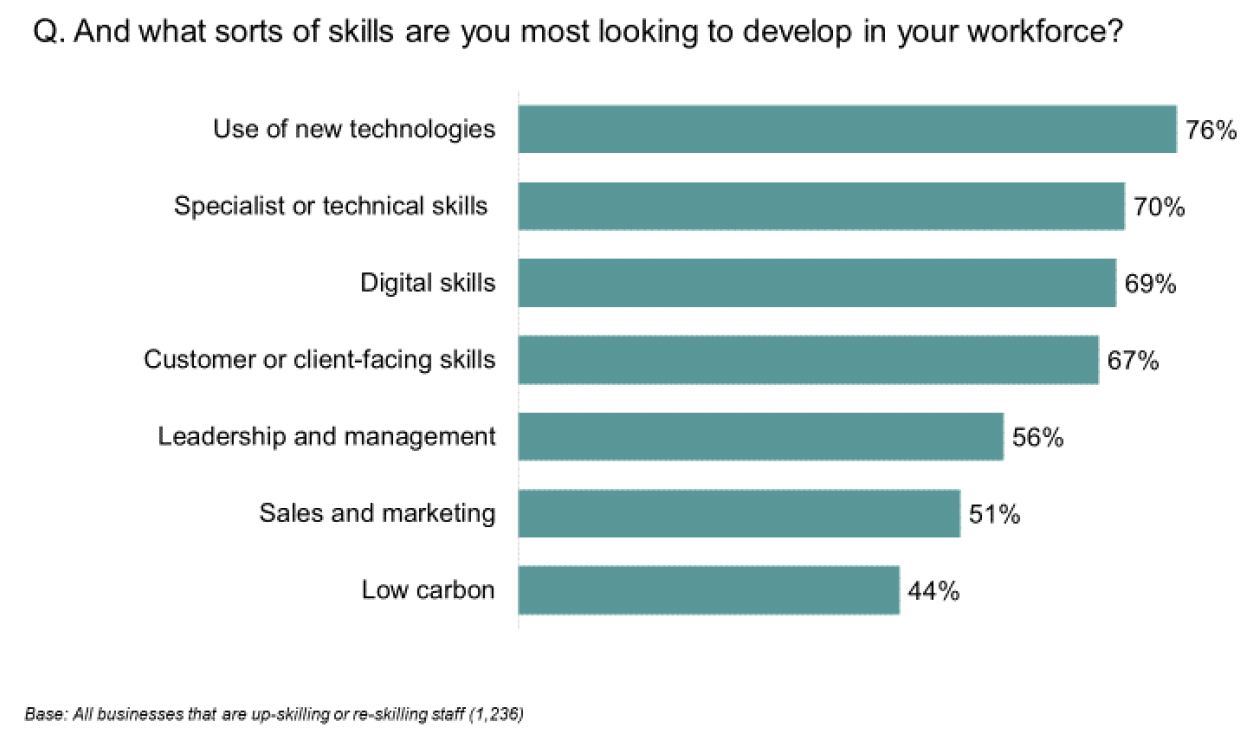Rural Scotland Business Panel Survey October 2022
This report presents findings from the third Rural Scotland Business Panel Survey carried out in June and July 2022.
7. Responding to change
Key findings
Businesses had mixed outlooks for the 12 months ahead: 41% were minimising change and hoping to continue as they were, 31% were open to change but not actively seeking to do so and 25% were actively seeking out new ways of doing things.
Most businesses (82%) were taking at least one action in response to changes in their working environment. The top three actions were: using greener supply chains (45%), upskilling or reskilling staff (41%) and using more locally sourced supplies (40%).
Among those that were upskilling or reskilling their workforce, the most common approaches being used were on the job training (90%), giving continual feedback and performance reviews (81%) and mentoring or coaching (72%).
The most sought-after skills were use of new technologies (76%), specialist or technical skills (70%), digital skills (69%) or customer or client-facing skills (67%).
Outlook for next 12 months
Businesses had mixed outlooks for the 12 months ahead (Figure 7.1):
- 41% were minimising change and hoping to continue as they were,
- 31% were open to change but not actively seeking to do so, and
- 25% were actively seeking out new ways of doing things.

Variation
Certain businesses were more likely to be minimising change:
- Small businesses (0-4 staff) (46%)
- Food and drink businesses (46%)
- Businesses in accessible rural areas (47%).
Others were more likely to be seeking out new ways of doing things:
- Businesses with 5-10 staff (30%), 11-24 staff (35%) or 25+ staff (39%)
- Businesses impacted by EU Exit (31%), COVID-19 (30%) and rising costs (27%)
- Those importing from (32%) and selling outside the UK (32%), and those importing from (28%) and selling to the rest of the UK (30%)
- Businesses behind where they would like to be on productivity (32%), competitiveness (32%) and skills development (31%).
Responding to changes in working environment
Most businesses (82%) were taking at least one action in response to changes in their working environment. The top three actions were:
- using greener supply chains (45%),
- upskilling or reskilling staff (41%), and
- using more locally sourced supplies (40%).
Around a third were collaborating or sharing resources (36%), diversifying products and services (35%) and offering expertise to other businesses (35%). Around a quarter were recruiting graduates or new talent (24%) or offering apprenticeships (24%) (Figure 7.2).

Variation
The following businesses were more likely to be taking certain actions:
- Large businesses (25+ staff) - recruiting graduates or other new talent (69%), upskilling or re-skilling staff (63%), offering apprenticeships (60%) and using greener supply chains (58%).
- Food and drink businesses - using more locally sourced supplies (46%) and collaborating or sharing resources (43%).
- Tourism businesses - using more locally sourced supplies (59%) and using greener supply chains (57%).
- Those behind where they would like to be on skills development were more likely to be upskilling or reskilling (51%), collaborating or sharing (43%), recruiting graduates (34%) and offering apprenticeships (31%).
Businesses striving for growth and open to change were more likely to be taking each action.
Upskilling and reskilling staff
Among those that were upskilling or reskilling their workforce, the most common approaches being used were on the job training (90%), giving continual feedback and performance reviews (81%) and mentoring or coaching (72%). This was followed by having staff shadow other colleagues (61%) or sending staff on external training courses (60%) (Figure 7.3).

Variation
The following businesses were more likely to be taking certain actions:
- Food and drink businesses – sending staff on external courses (68%) and brining in external training (56%).
- Tourism businesses – moving staff into new or different roles (64%) and offering secondments (23%).
- Businesses operating above pre-pandemic levels – on the job training (95%), shadowing colleagues (71%), and moving staff into new or different roles (56%).
Large businesses (25+ staff) and those striving for growth were more likely to be taking most actions.
Skills needed
Among those that were upskilling or reskilling their workforce, the most sought-after skills were use of new technologies (76%), specialist or technical skills (70%), digital skills (69%) or customer or client-facing skills (67%). This was followed by leadership and management skills (56%) and sales and marketing skills (51%), while under half mentioned skills relating to low carbon (44%) (Figure 7.4).

Variation
The following businesses were more likely to be seeking certain skills:
- Large businesses (25+ staff): leadership and management skills (73%).
- Food and drink businesses - low carbon (60%).
- Tourism businesses – customer or client-facing skills (82%).
- Creative industries – digital skills (82%).
- Businesses in the Highlands and Islands – digital skills (72%), leadership and management (61%), low carbon (50%).
- Those behind where they would like to be on competitiveness – new technologies (84%), digital skills (77%) and leadership and management (69%).
Contact
Email: socialresearch@gov.scot
There is a problem
Thanks for your feedback